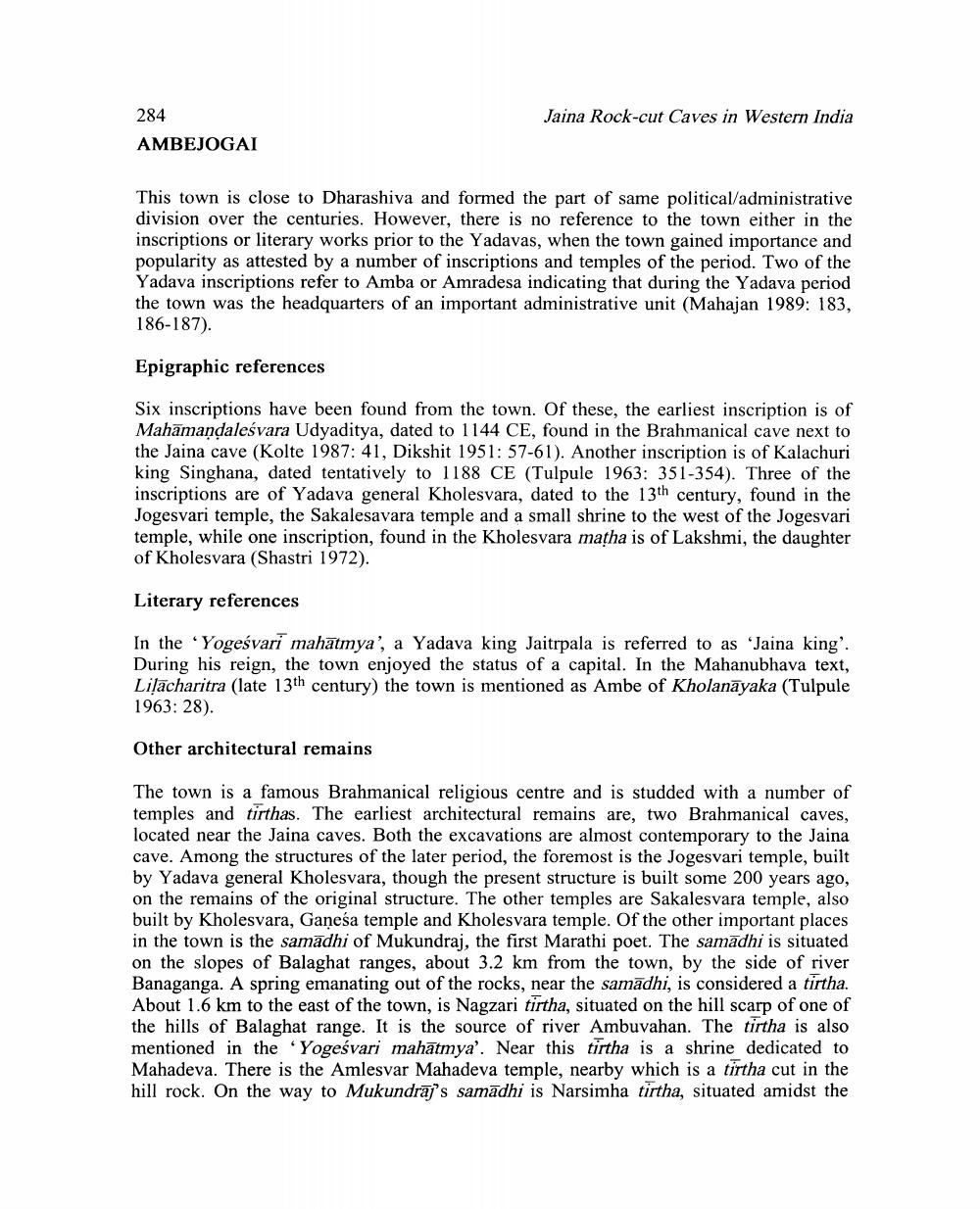________________
284
AMBEJOGAI
Jaina Rock-cut Caves in Western India
This town is close to Dharashiva and formed the part of same political/administrative division over the centuries. However, there is no reference to the town either in the inscriptions or literary works prior to the Yadavas, when the town gained importance and popularity as attested by a number of inscriptions and temples of the period. Two of the Yadava inscriptions refer to Amba or Amradesa indicating that during the Yadava period the town was the headquarters of an important administrative unit (Mahajan 1989: 183, 186-187).
Epigraphic references
Six inscriptions have been found from the town. Of these, the earliest inscription is of Mahamandaleśvara Udyaditya, dated to 1144 CE, found in the Brahmanical cave next to the Jaina cave (Kolte 1987: 41, Dikshit 1951: 57-61). Another inscription is of Kalachuri king Singhana, dated tentatively to 1188 CE (Tulpule 1963: 351-354). Three of the inscriptions are of Yadava general Kholesvara, dated to the 13th century, found in the Jogesvari temple, the Sakalesavara temple and a small shrine to the west of the Jogesvari temple, while one inscription, found in the Kholesvara matha is of Lakshmi, the daughter of Kholesvara (Shastri 1972).
Literary references
In the Yogesvari mahatmya', a Yadava king Jaitrpala is referred to as 'Jaina king'. During his reign, the town enjoyed the status of a capital. In the Mahanubhava text, Lilacharitra (late 13th century) the town is mentioned as Ambe of Kholanayaka (Tulpule 1963: 28).
Other architectural remains
The town is a famous Brahmanical religious centre and is studded with a number of temples and tirthas. The earliest architectural remains are, two Brahmanical caves, located near the Jaina caves. Both the excavations are almost contemporary to the Jaina cave. Among the structures of the later period, the foremost is the Jogesvari temple, built by Yadava general Kholesvara, though the present structure is built some 200 years ago, on the remains of the original structure. The other temples are Sakalesvara temple, also built by Kholesvara, Gaṇeśa temple and Kholesvara temple. Of the other important places in the town is the samadhi of Mukundraj, the first Marathi poet. The samadhi is situated on the slopes of Balaghat ranges, about 3.2 km from the town, by the side of river Banaganga. A spring emanating out of the rocks, near the samadhi, is considered a tirtha. About 1.6 km to the east of the town, is Nagzari tirtha, situated on the hill scarp of one of the hills of Balaghat range. It is the source of river Ambuvahan. The tirtha is also mentioned in the 'Yogesvari mahatmya'. Near this tirtha is a shrine dedicated to Mahadeva. There is the Amlesvar Mahadeva temple, nearby which is a tirtha cut in the hill rock. On the way to Mukundraj's samadhi is Narsimha tirtha, situated amidst the




